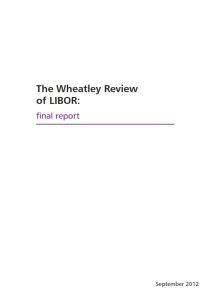Join getAbstract to access the summary!

Join getAbstract to access the summary!
Martin Wheatley
The Wheatley Review of LIBOR
Final Report
HM Treasury, 2012
What's inside?
How can regulators safeguard the integrity of the crucial LIBOR interest rate?
Recommendation
In 2012, faced with fraud allegations surrounding the benchmark interest rate known as the London Interbank Offered Rate (LIBOR), fiscal authorities in the United Kingdom took action. The Chancellor of the Exchequer, George Osborne, asked Martin Wheatley, managing director of the Financial Services Authority and designated head of the new Financial Conduct Authority, to lead a study of how to improve LIBOR. Even though just a small group of bankers sets LIBOR – daily at 11 a.m. Greenwich Mean Time – it is a crucial interest rate that banks and investors use globally in financial contracts worth more than $300 trillion at the time of Wheatley’s report. After relating the results of the study, this clearly stated report recommends 10 reforms and policy changes that would ensure LIBOR’s integrity, though it does not venture into the history of the initial crisis or the area of alleged bank manipulations. getAbstract suggests this official report to bankers, risk managers, monetary authorities and financial regulators.
Summary
About the Author
Martin Wheatley is chief executive of the UK’s Financial Conduct Authority.


















Comment on this summary